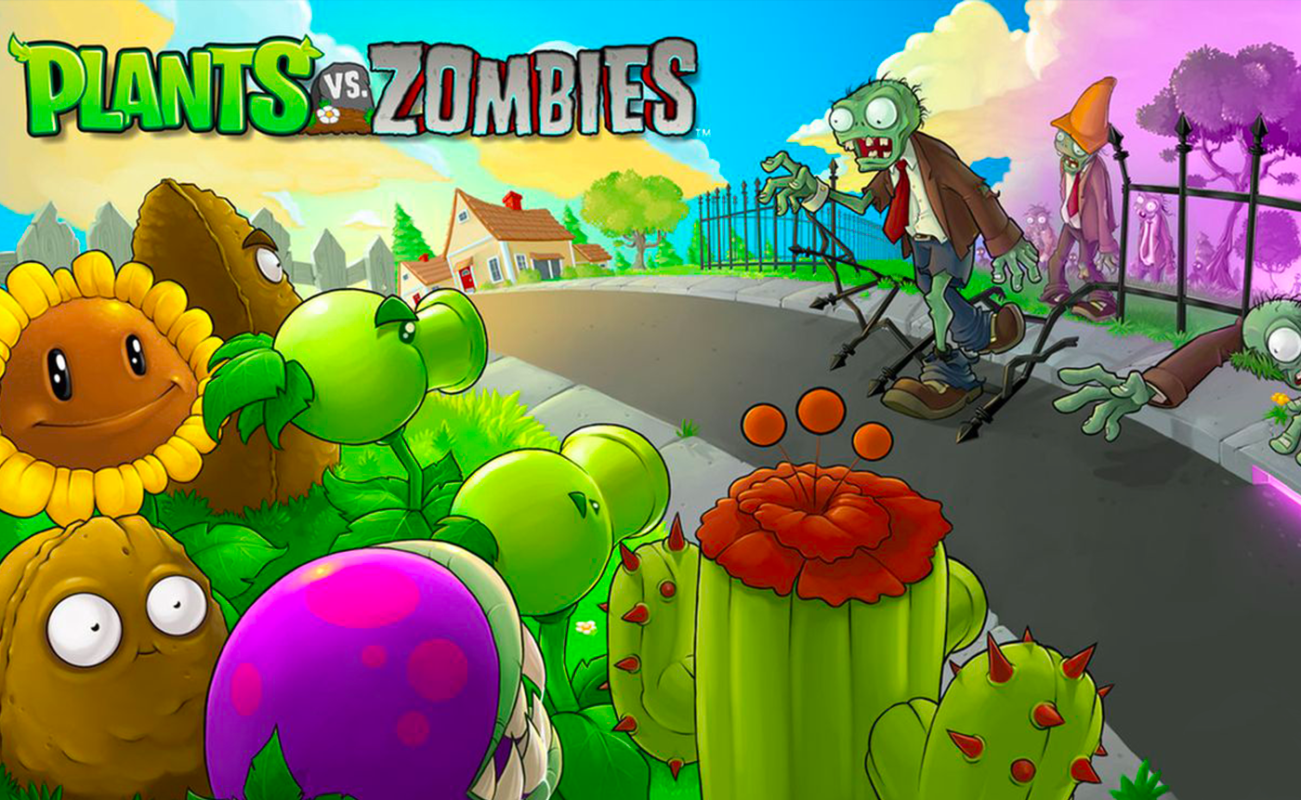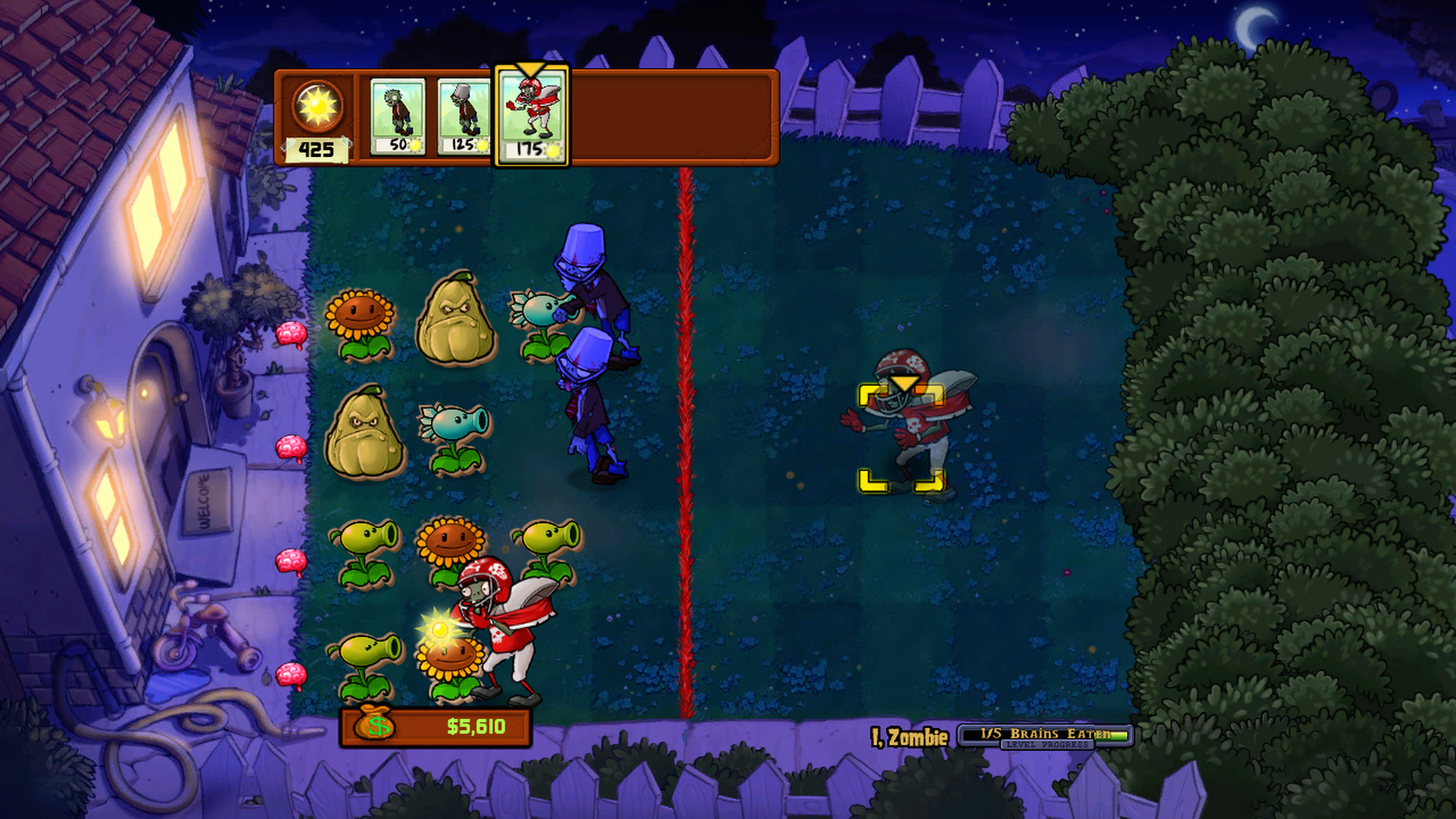Not Dead Yet is a series of reviews of retro games deemed important enough to play before you die. Obviously we can’t play all of them but we can at least check them out to see how well they’ve held up.
What they say about it
PopCap calls the game a “lawn defense” title: The undead are coming for you in your house, so your garden – and backyard, and eventually even rooftop – represent your last lines of security. You’re left, in other words, with no alternative but to fight off the shambling apocalypse using horticulture.
What we say about it
I never paid close attention to the tower defense boom of the late 2000s but I do remember there being an unusual number of games that had those words in the title. They all looked similar – usually set in some type of high-fantasy or sci-fi setting with a top-down grid view, featuring similar character archetypes that you’ve seen repeated before. Here’s a foot soldier, here’s your ranged unit, here’s the healer, etc. – I’m oversimplifying here but the point remains.
While that genre had its time to shine, not many of those games turned themselves into a bonafide franchise the way Plants Vs Zombies did. It spawned its own successful third-person shooter series as well as a full-blown card game. I think Plants Vs Zombies embracing its own absurdity from the start helped it stand out at the exact time it needed to. The first thing that stood out is how it looks.
It’s hard to overstate how important the visuals are to the overall experience. The use of color shows that it isn’t afraid to embrace the cartoony side of things in an era where games tended to lean into more muted, rustic color palettes. I’d guess it’s also hard to make a garden-themed game that doesn’t feature heavy in brighter side of the rainbow.
By embracing color, the units can truly show off their personalities. That’s difficult to do considering none of them really talk. Each character feels unique and designed in a way that makes them instantly identifiable. You take one look at a unit on the field and get an immediate idea of what their role is.
The sunflower radiates, always smiling and bouncing while on the field. It’s there as your support and looks like it’s always eager to help by giving you the sunshine needed to build up your garden’s defense. The peashooter stands non-descript but ready for battle – it’s not quite as dark of a green as a toy soldier would be but you get the same idea. It’s strictly business with them. The walnut waits patiently in the face of danger, solid as a rock and always smiling. It’s unaware of its sacrificial role until it’s too late – after a zombie chomps away at it long enough, it becomes more and more visibly distressed.
The same is true of the zombies. In early versions of the game, a jheri-curled zombie donned the famous red-leather outfit worn by Michael Jackson in his Thriller music video. It makes sense that this zombie dances its way across the field and summons backup dancers to the party. There’s another zombie in later stages wrapped up in a straightjacket, cranking away at a jack-in-the-box until it comes within striking distance. Once that jingle finishes – BOOM. It blows itself up along with any other plants (and zombies) standing nearby.
Plants Vs Zombies knows the style it’s aiming for and makes it very easy to visually follow along. That’s just one part of the equation though. You still need to learn the mechanics involved with each unit as you unlock them but PopCap manages to nail the pacing.
There are few games that successfully tap into the “just one more turn” vein but Plants Vs Zombies belongs in that category. Part of how it does this is how it manages to layer in new wrinkles both in the plant units you unlock as well as the zombie units you defend against. You’ll never really feel overwhelmed because the unit you unlocked on the previous level likely counters the new zombie you’re about to encounter. The deeper you get, the more options you have to successfully defend your house. It’s almost perfect in that you’re never really punished for not using a hard counter squad. You might need to utilize more creative solutions, but no challenge is truly insurmountable unless you really screw up.
The most important thing to me is that at its core, it’s just a fun videogame to play. As games have gotten bigger, they’ve turned more into experiences, which isn’t necessarily a bad thing. Games should still be fun to play. If you’re not having fun, then what are you even doing?
Where it starts to wear a bit thin is when you see that some of the more unique plants that can be unlocked are gated behind in-game currency and that’s a bummer because some of them can add some interesting layers to your defenses. For example, the dual sunshine plant doubles your sunshine output for each sunflower you upgrade and it makes utilizing some of the more expensive plants more practical (such as the Threepeater – this plant shoots bullets across 3 lanes simultaneously). However, you have to buy them from Crazy Dave’s shop and they are not cheap. This isn’t just limited to the enhanced plants; things like extra plant slots are also locked up in the shop. It’s a bit disappointing because if you want to unlock your full arsenal and potential, you must either replay levels or dive into some of the side modes, which while interesting, immediately become kind of grindy.
Should you play this game before you die?
Plants Vs Zombies is one of the most fun games that I’ve played and that an important distinction I want to make. There are a lot of high-profile games that are deemed important for a number of reasons – whether it be innovation in storytelling, graphical fidelity, or being a benchmark experience of a generation. Those are all things worthy of praise but sometimes what gets overlooked is whether or not a game is fun to play and from start to finish, I haven’t had this much fun with a game in quite some time.



